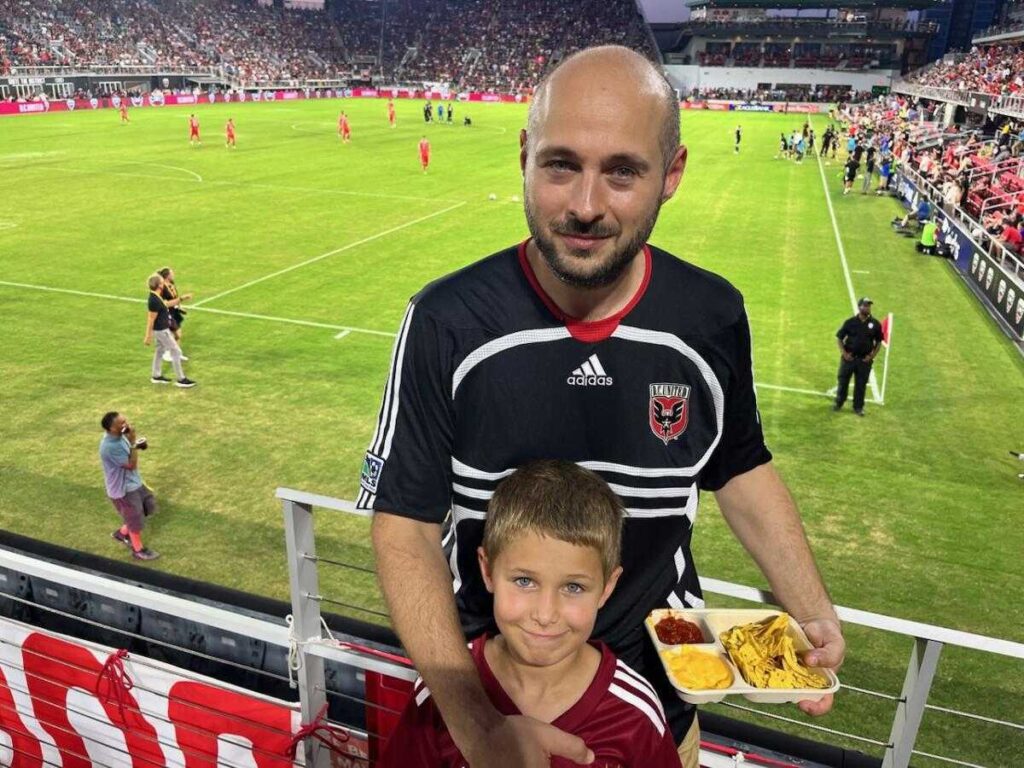Teaching Strategies Employee Spotlight: Sergey, Senior AI Developer

 Teaching Strategies was recommended to Sergey by a friend and current colleague, and after some investigation, he felt it checked a lot of boxes for what he was looking for in a new position: the industry, the technology, the company spirit, the office atmosphere. At the time, he was getting his feet wet with the Go programming language and machine learning possibilities. Sergey says that during his interview, he “immediately started geeking out about artificial intelligence potential in early childhood education.”
Teaching Strategies was recommended to Sergey by a friend and current colleague, and after some investigation, he felt it checked a lot of boxes for what he was looking for in a new position: the industry, the technology, the company spirit, the office atmosphere. At the time, he was getting his feet wet with the Go programming language and machine learning possibilities. Sergey says that during his interview, he “immediately started geeking out about artificial intelligence potential in early childhood education.”
After joining the team in the middle of our first major modernization efforts with The Creative Curriculum Cloud, he transitioned to the GOLD team and spent another year modernizing the Assess area and then Reports.
Today, Sergey is on the Artificial Intelligence/Machine Learning (AI-ML) team as a Senior AI Developer. In the true spirit of research and development, he spends his day researching the latest trends in artificial intelligence, building new machine learning models, analyzing data from our products, and aiding other teams in building high performing Application Programming Interfaces (APIs).
Recently, we asked Sergey to share his thoughts on work and life at Teaching Strategies.
What motivates you to work in the ed tech field?
My ed tech career started with the Office of the State Superintendent of Education in DC, where we built the first app to provide underprivileged DC graduates with out-of-state tuition aid. Following the success of the program, I continued building software for the nutrition programs and the DC Summer Youth Program, partnering with DOE to assist 14–21-year-olds in finding paid apprenticeships around the district and jumpstart their careers. While I worked on these programs, I witnessed some of the challenges in education firsthand, and it was a humbling experience to see how my tech impacted students.
Can you share a recent product/project that you were involved in launching? How did this impact the organization?
Two colleagues and I organized what is now officially the AI-ML team. The efforts were recognized by our senior leadership team, so we got a green light to work on the first AI solution: Smart Suggestions Checkpoints. Interestingly, we all independently worked on the preliminary proof-of-concept over the past couple of years, because we realized how important it was to make it easier for teachers to submit their Checkpoint reviews during their busy schedules. Balancing our day-to-day work and this exciting opportunity, we dove into building models and databases, researching teachers’ inputs, and working with the Assess team on building teacher-friendly UI.
With incredible support and a knowledge boost from other Teaching Strategies team members, we pushed Smart Suggestions Checkpoints live within months of getting the thumbs-up from the beta testing group. Since the launch, we’ve received positive comments across all organizations, and with user feedback, we are planning on continuously improving the product to keep it relevant and useful. We currently have more projects in the works, which I hope will make our products even more enjoyable for our practitioners.
How do you see AI emerging in our solutions and within the early childhood education space?
Imagine the ability for the teacher to have AI render their vision of a classroom layout, simply based on their description and a few photos! That’s the type of a long-term transformation I hope we can bring to teachers across the world.
Immediately following the launch of our first AI/ML product, we saw interest from our co-workers across all departments in being part of the work we were doing. Ideas from across the company included using speech recognition for voice entries, scanning and recognizing handwritten forms, recommending related teacher activities, and more. I hope most of these ideas will manifest soon.
Teachers will and should always be in control of their wants, but now the machine can simplify their job by transforming how teachers input their daily data or how that input presents them with something new that they can use and expand upon. While this is exciting, not even the most sophisticated machines can replace the need for child/caregiver interaction.
As technology continues to evolve, how do you think our products will be improved by these changes?
We want to empower teachers with easy access to the rich knowledge our company has been building so meticulously over the past few decades. Our solutions should be accessible in as many languages as possible and have an intuitive way for all users (families, teachers, caregivers, partners) to communicate efficiently through our products regardless of their language or demographic.
With great tools comes great responsibility. Overreliance on AI assistants can lead to degradation of the individualization of early childhood education and creativity of learning interactions. The goal of our AI-augmented tools should be to make it easier for teachers and centers with more limited technological access or resources to excel. Technological leaps in the past few years helped boost new forms of pedagogy. The new generation of teachers will be immersed in the hybrid approach.
